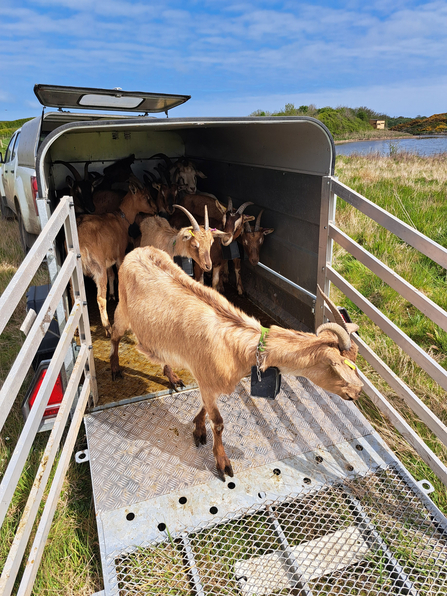
Goats and their collars set foot onto Hauxley grass. Image by Stephen Comber.
Hi-tech GPS technology-enabled NoFence collars have been successfully trialled on cattle and goats at a number of the wildlife charity’s reserves around the region over the past two years with the NoFence mobile app allowing invisible GPS boundaries to be drawn around grazing areas to control areas they have access to in a bid to prevent overgrazing, protect sensitive areas such as ground-nesting bird sites or bring them closer to a loading area just before transporting them off to another site (makes handling much simpler).
The Druridge Bay reserve is now currently home to a herd of thirteen goats, each sporting a NoFence collar as they graze the site’s scrubland this summer, before they head to East Chevington to continue their work maintaining a perfect habitat for lesser butterfly orchids to thrive in.
Later this summer, the NoFence collar programme will be rolled out across the wildlife charity’s West Chevington site to coincide with the introduction of a free ranging herd of cattle that will have access to its woodlands, grassland, and wetlands.
Alex Lister, Northumberland Wildlife Trust Druridge Bay Landscapes Manager says:
“Drones, trail cameras, state of the art wildlife surveillance cameras and sound meters are all being employed across our Druridge Bay sites to monitor wildlife and share their secrets with our visitors in the Hauxley Wildlife Discovery Centre, so it comes as no surprise that our Hauxley goats are now going high tech as well.
“The GPS collars allow staff and volunteers to monitor their movements from a distance thereby allowing them to continue with the important job of grazing the reserve for the benefit of the flowers and grasses.”
